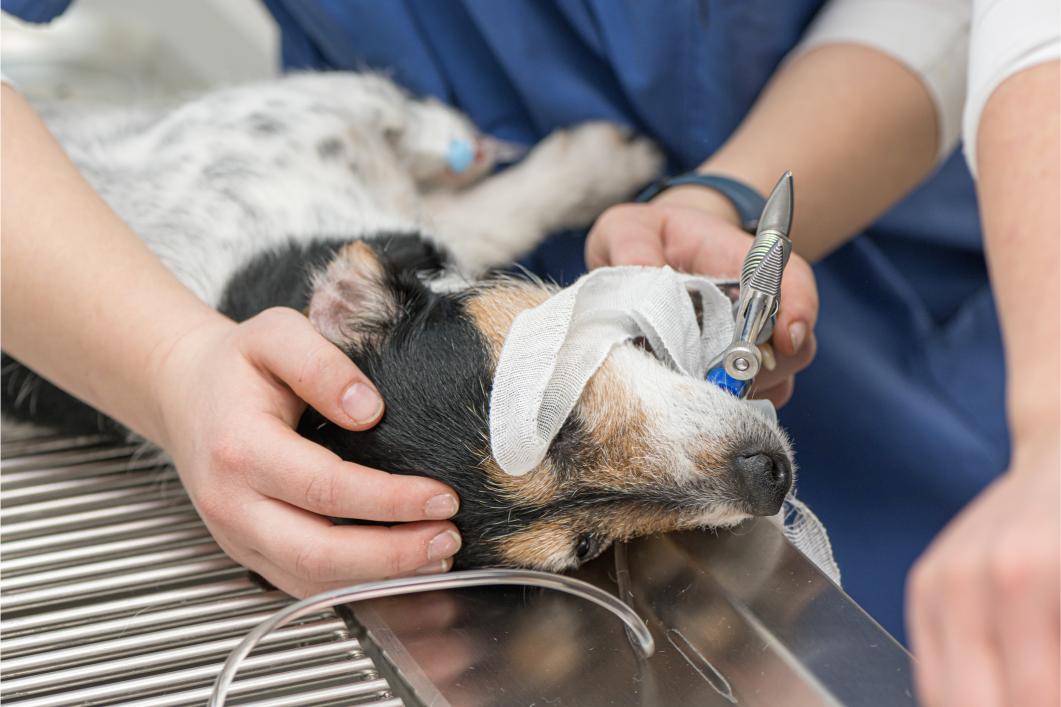
Sometimes, surgery is part of keeping our pets happy and healthy. At Sky Canyon Animal Hospital, we know how important it is to choose the safest, most comfortable option for your pet—and that’s where laparoscopic surgery comes in. If you’ve been wondering whether a pet laparoscopic spay or neuter is the right choice, this blog post may help you decide.
Let’s explore what this technique involves, why it’s gaining popularity, and what you and your pet can expect from the experience.
What Is Laparoscopic Surgery for Pets?
Laparoscopic surgery—often called “minimally-invasive surgery for pets”—uses a tiny camera and specialized instruments inserted through small incisions. The veterinarian views your pet’s internal structures on a screen and performs the procedure with enhanced precision and care.
For spaying, this technique involves removing just the ovaries (ovariectomy) instead of the entire uterus and ovaries, as in traditional spaying. Neutering, particularly for male dogs, can also be performed laparoscopically in certain cases.
The Benefits of Laparoscopic Surgery for Pets
Here’s what makes this modern technique a standout:
- Smaller incisions mean less trauma to your pet’s body.
- Less pain after surgery thanks to reduced tissue damage.
- Quicker recovery times, often with pets getting back to their usual selves in just a few days.
- Lower risk of complications, such as infection or excessive bleeding.
- Greater surgical precision, especially when navigating around delicate internal structures.
It’s no wonder that laparoscopic surgery for cats and dogs is becoming a popular choice among pet parents who want the gentlest, safest surgical option available.
Are There Any Downsides?
While laparoscopic surgery is an excellent fit for many pets, it’s not necessarily ideal for every situation. Here are a few things to consider:
- Availability: Not all veterinary hospitals are equipped to offer laparoscopic surgery.
- Procedure limitations: Some surgeries may not be suitable for a laparoscopic approach, especially if more extensive tissue removal or repair is needed.
- Cost: This technique requires specialized equipment and training, so it may be more expensive than traditional spay or neuter procedures.
The good news? Our experienced team will walk you through every option and help you decide what’s best for your pet.
What To Expect: Before, During, and After Surgery
We know it can feel nerve-wracking to send your pet in for any kind of surgery, but knowing what to expect can make all the difference.
Here’s how a pet laparoscopic spay or neuter typically unfolds:
- Before surgery: Your pet will undergo a physical exam and pre-op bloodwork to make sure they’re a good candidate. Our team will provide fasting instructions and answer any last-minute questions.
- During surgery: Your pet is placed under general anesthesia. The vet makes one to three tiny incisions to insert the laparoscopic tools. The procedure is completed with precision and minimal disruption to surrounding tissue.
- After surgery: Most pets go home the same day! Recovery is usually smoother and quicker than with traditional surgery. You’ll receive easy-to-follow post-op care instructions, and we’re always just a phone call away if you need support.
Wrapping It Up: Is Laparoscopic Spaying or Neutering Right for Your Pet?
For many healthy, active pets, minimally invasive surgery is a gentle and effective option for spaying or neutering. Every pet is different, but the reduced discomfort and faster healing time make it a popular choice.
Our compassionate, skilled team is happy to answer your questions about laparoscopic surgery for dogs or cats and help you decide on the best path forward. Call us at (951) 461-4100 to schedule an appointment.

